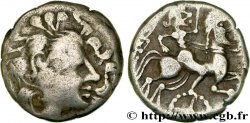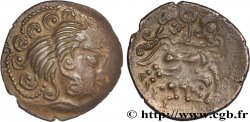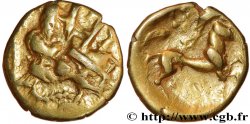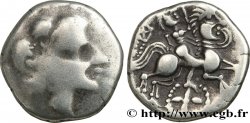Live auction - bga_285895 - VENETI (Area of Vannes) Statère d'électrum au personnage recroquevillé ailé – aux esses
You must signin and be an approved bidder to bid, LOGIN TO BID. Accounts are subject to approval and the approval process takes place within 48 hours. Do not wait until the day a sale closes to register. Clicking on "BID" constitutes acceptance of the terms of use of cgb.fr private live auctions.
Bids must be placed in whole Euro amounts only. The sale will start closing at the time stated on the item description; any bids received at the site after the closing time will not be executed. Transmission times may vary and bids could be rejected if you wait until the last second. For further information check the Live auction FAQ
All winning bids are subject to a 18% buyer’s fee.
All winning bids are subject to a 18% buyer’s fee.
| Estimate : | 1 500 € |
| Price : | no bid |
| Maximum bid : | no bid |
| End of the sale : | 30 January 2018 15:12:10 |
Type : Statère d'électrum au personnage recroquevillé ailé – aux esses
Date: c. 80-50 AC.
Mint name / Town : Vannes (56)
Metal : electrum
Diameter : 22 mm
Orientation dies : 11 h.
Weight : 6,31 g.
Rarity : R3
Coments on the condition:
Flan un peu court et irrégulier, avec un droit un peu décentré et un revers complet. La frappe est molle, probablement avec un coin de revers usé. Patine légèrement tachée au revers
Catalogue references :
Predigree :
Cet exemplaire est le n°53 du trésor d'Hennebont ; il est issu des coins D29 - R39.
Obverse
Obverse legend : ANÉPIGRAPHE.
Obverse description : Tête stylisée à droite, la chevelure composée de cinq mèches en esses et en rouleaux, avec une croix au-dessus ; un motif triangulaire devant le front, avec des cordons perlés autour de la tête, terminés par de petites têtes coupées ; le menton est terminé par une sorte d’esse et une autre esse figure devant la bouche.
Reverse
Reverse legend : ANÉPIGRAPHE.
Reverse description : Cheval androcéphale à gauche, conduit par un aurige tenant un fouet terminé par une croisette en guise de stimulus devant le poitrail ; une esse évidée entre le stimulus et le poitrail ; un petit personnage recroquevillé et ailé entre les jambes du cheval.
Commentary
Représentée par les treize exemplaires n° 45 à 57, cette variante manque à la classification de P. Abollivier. D’un style de droit proche des monnaies précédentes, mais avec une tête plus petite, ces statères ont la particularité d’avoir une petite esse devant la bouche au droit et une autre esse dédoublée entre le stimulus et le poitrail du cheval au revers.
Un motif en fleuron, comparable à celui présent sur les statères des types de Carantec et du Catillon, est représenté dans la chevelure au droit (cf. n° 45, 47, 52-56) et au revers sous la queue du cheval (cf. n° 57). Le n° 56 a d’ailleurs un fleuron inversé dans la chevelure par rapports aux autres statères.
Ces treize statères sont issus de trois coin de droit (D28-30) et de quatre coins de revers (R37-40).
Un motif en fleuron, comparable à celui présent sur les statères des types de Carantec et du Catillon, est représenté dans la chevelure au droit (cf. n° 45, 47, 52-56) et au revers sous la queue du cheval (cf. n° 57). Le n° 56 a d’ailleurs un fleuron inversé dans la chevelure par rapports aux autres statères.
Ces treize statères sont issus de trois coin de droit (D28-30) et de quatre coins de revers (R37-40).







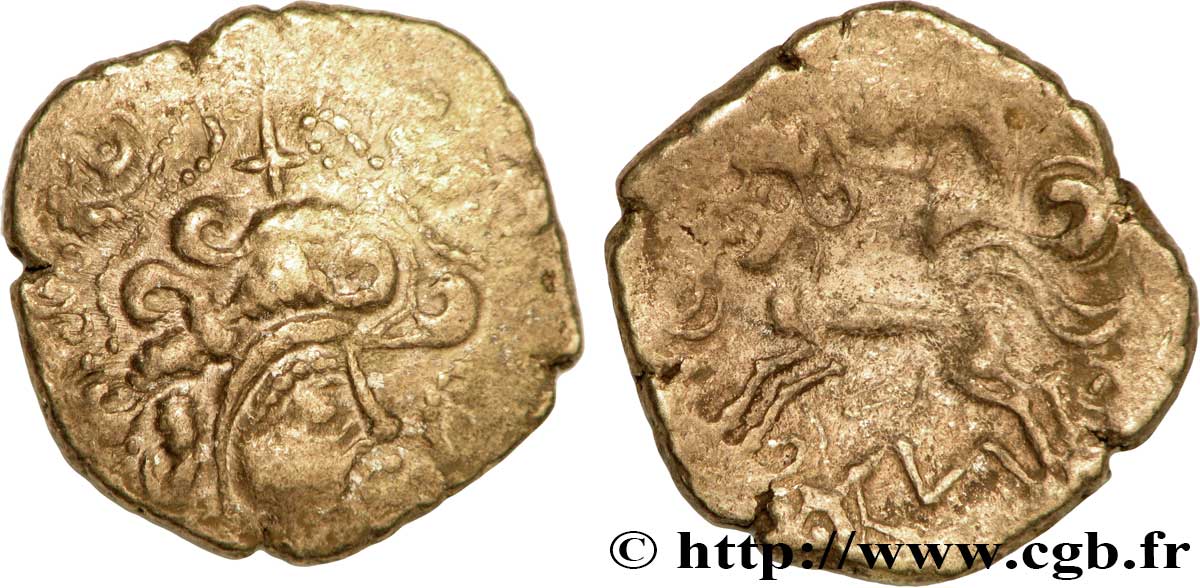
 Report a mistake
Report a mistake Print the page
Print the page Share my selection
Share my selection Ask a question
Ask a question Consign / sell
Consign / sell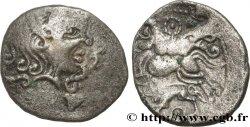
 Full data
Full data